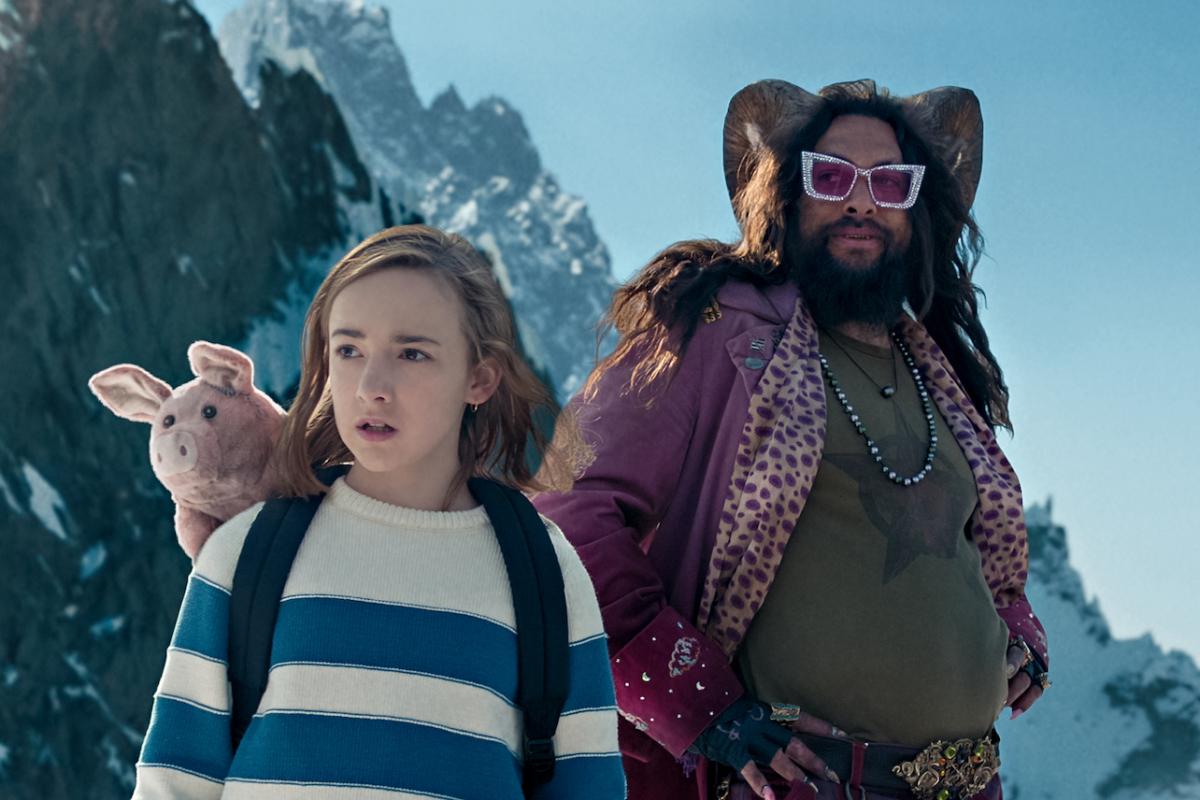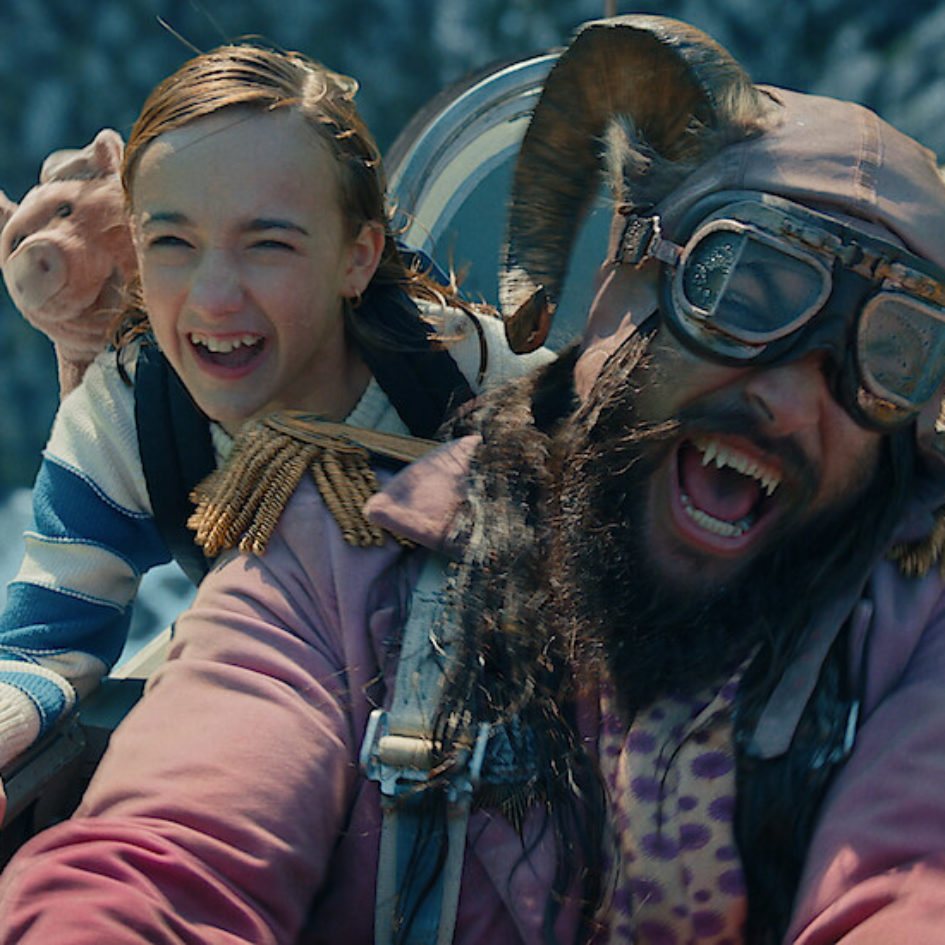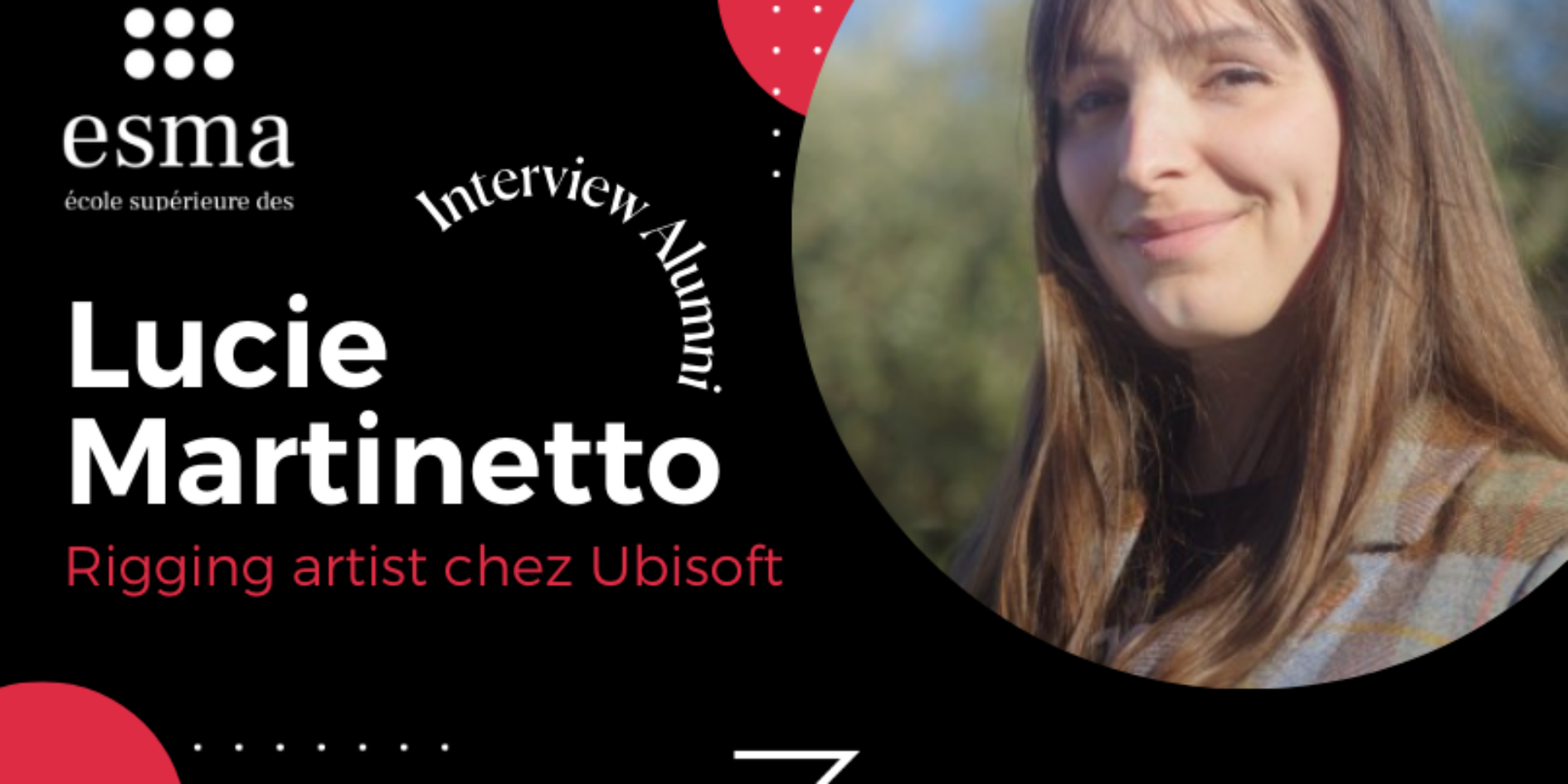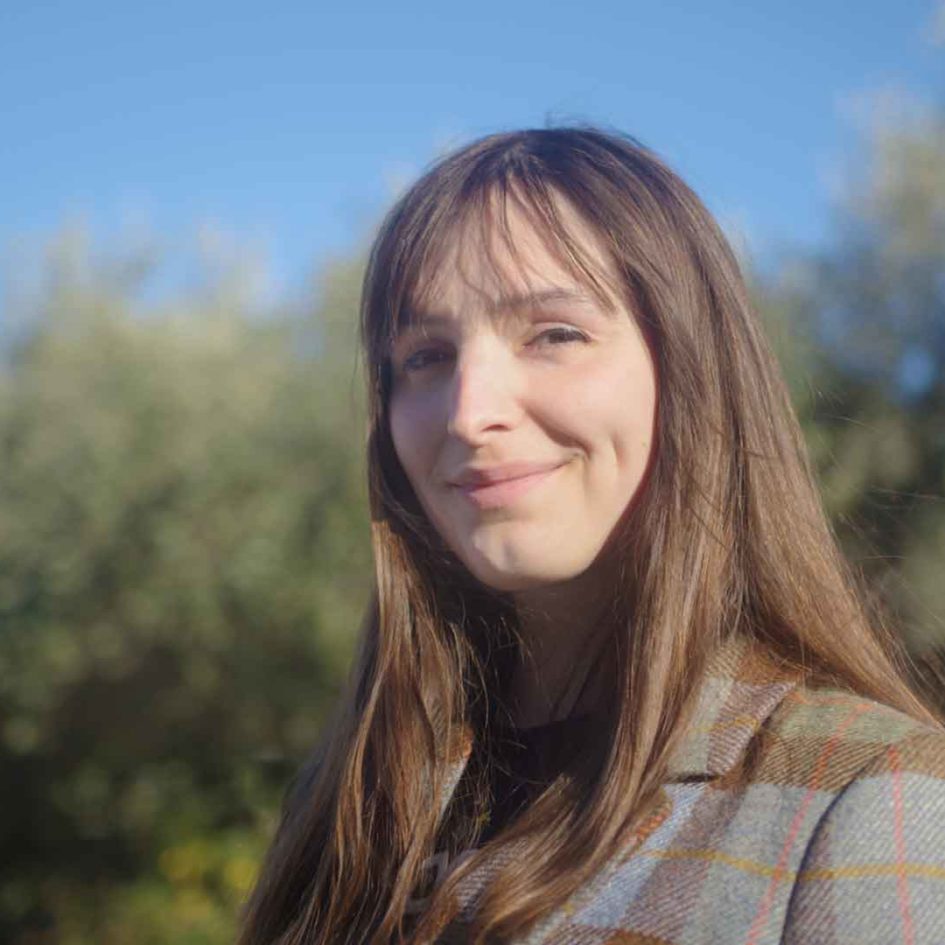
Lucie Martinetto
Recently nominated for a VES Award, Lucie Martinetto graduated from ESMA at just 20 years old. The Montpellier native worked abroad (London, Canada) before settling in Montpellier. The Hérault native has specialized in facial rigging, a field in which she excels.
A look back at your years at ESMA
WHAT WAS YOUR COURSE OF STUDY BEFORE JOINING ESMA?
After a baccalaureate S in physics/chemistry where I obtained a distinction, I wanted to be an aeronautical engineer. I was not accepted in the schools. I thought about it! My mother is an artist. I’ve always drawn a lot and loved animated films. My Neighbor Totoro is really the 2D animated film produced by Studio Ghibli that marked me when I was young. It was the first film I saw in the cinema. In 3D, the Dreamworks productions with Shrek, Kung Fu Panda, The Five Legends made me dream all my childhood!
WHY DID YOU CHOOSE TO STUDY 3D ANIMATION?
I was a year ahead of my time, my parents told me: try an art school. It also happens that my father has a colleague whose daughter (Chloé Bonnet) was at ESMA in the last year of 3D animation. She explained everything to me, introduced me to the training. That unlocked a part of my brain. All of a sudden I said to myself: “I can work on what I’ve been passionate about since childhood: animated films or video games”. Knowing that I could make a profession out of it, it became obvious! I’m from Montpellier, I feel good here. So, at 17, I entered ESMA without going through the MANAA because I already had good drawing skills. At the time, the course lasted three years. So at 20, I got my diploma. I was very happy!
HOW DO YOU FEEL ABOUT THE COURSE OF STUDY?
It’s a very demanding course. I matured quite quickly thanks to it. There were about forty of us at the end of the course, which allowed me to create very strong links with the people with whom I did the training, it was like a family. The course really gave me a rigorous work ethic. There was a very intense emulation, a guarantee of skills and openness. In the ESMA network, we know that the students leave with a certain standing. You know that your diploma is worth something in the animation industry.
WHY DID YOU SPECIALIZE IN RIGGING? WHAT DOES IT CONSIST OF AND HOW DO YOU LIKE IT?
I come from a Bac S, so I have a rather mathematical, scientific mind. Being a rigger was really a combination of both fields: creativity and technicality. For example, in my daily work I do code, there is a side where we must also study anatomy. We only start rigging in the second year. I thought that this specialization appealed to me the most. In fact, I did the rigging on my graduation film. I didn’t want to do anything else, in my head it was an obvious choice. Rigging is a shadow profession that consists in giving the capacity of movement to what is inanimate as for a puppet. I allow the animators to create the emotions. Rigging is a niche sector, a job in short supply, sought after, that few people want to do, but it’s a key department where you have to adapt to each studio.
HOW DID YOUR PROFESSIONAL IMMERSION GO AFTER GRADUATING FROM ESMA?
It went really well! I had a job before I graduated after meeting someone at the Annecy Festival. I had signed a contract and I knew that I was going to go to London. It was reassuring for me and the family. ESMA gave me the tools but also encouraged me to be curious, to know how to adapt. I had the toolbox. And a professional family.
Watch Lucie Martinetto’s replay about her career path and her nomination for the VES Awards (in French).
Your professional career
TELL US ABOUT THE DIFFERENT PROJECTS YOU HAVE WORKED ON IN THE DIFFERENT STUDIOS WHERE YOU HAVE WORKED, ESPECIALLY ABROAD?
At first, I didn’t want to work abroad. I’m very homebody. Then I said to myself: “I’m going to give priority to my career, then I’ll do what I want with my personal life”. So I went to London to work for The Mill, an advertising company, for Lexus, Netto, Deutsche Telekom, Chanel, etc.
Then I was hired by Framestore, still in London, as a rigger on Fantastic Beasts 2. That was on the Warner Bros. sets, which was incredible! There, I met Tom Cruise, Hugh Grant, Johnny Depp, Jude Law, J.K. Rawling, Elie Semoun, Gad Elmaleh, Olivier Nakache and Daniel Radcliffe my childhood idol. I told myself that this is it, I can die in peace (laughs). Between noon and two, we were going to wander around the sets of Tom Raider or Paddington 2. All this for almost a year!
Then I headed to Quebec in 2018 with L’Atelier Animation on a short film for the Parc Astérix called Attention Menhir, and in the wake of that a feature film Fireheart released in 2022, Vaillante in French, on which I did facial development and that’s where my love for facial rigging, a specialty in the specialty, will blossom. My supervisor resigned, it fell on my shoulders with more responsibilities including management of a small team. A great opportunity for me!
Then, back to Framestore who asked me again for the Montreal branch. I worked on Tom and Jerry, Peter and Wendy for the facial development of the characters. A big project then Little Nemo and the World of Dreams where I was nominated for the VES Awards. I was in charge of rigging on the project. And so from A to Z, I rigged all the characters including the little pig who was nominated. That’s pretty crazy!
HOW DO YOU FEEL AFTER THIS NOMINATION?
It’s a real accomplishment for me and more globally for an artist in cinema and special effects. I am proud of myself! It’s a very big event, whatever happens I will remember it all my life. It’s a recognition from my peers for a department that works in the shadow as I said before. There was a lot in our category with Avatar, Disney Pinocchio: Honest John, Beast: Lion. It gives the nomination a tasty edge among the big boys.
HOW DOES IT WORK AT FRAMESTORE?
It’s a big company, the biggest in the world in terms of special effects staff and number of artists. A factory! The advantage is that you can specialize completely in your field. This allows you to create even more networks. For example, there were about fifty riggers in Montreal. Montreal is a kind of Eldorado for the French: you are well paid, rents are not expensive, there are a lot of job opportunities. This side is great, and it would be even better if it were two hours by plane from Montpellier.
WHAT QUALITIES DO YOU NEED TO DISPLAY IN YOUR WORK?
You have to know how to adapt! ESMA gave me the toolbox, which is an asset that allows me to be serene. In each company, you learn a lot of new things. Everything is done differently in different companies. The world of 3D is quite young, the technology is improving every year, there is new software, artificial intelligence. You have to keep up with the times, go to conferences, learn about what’s going on; the studios allow us to train.
In the rigging world, Chat GPT is exploding and can create code for us but it’s imperfect. I see it more as a tool that will allow us to work faster. I don’t have a problem with that.

YOU ARE NOW BASED IN MONTPELLIER ?
Yes, I asked Framestore to come back to France during the pandemic, first as a freelancer for their London studio.
After a while, I saw myself more in a French studio, so I took the opportunity to collaborate with Unit Image since May 2022, still working from home in Montpellier. It’s really nice to be able to work from wherever you want!
The Unit Image studio is specialized in video game trailers, big licenses. I can’t tell you more, it’s confidential!
(editor’s note: since the interview, Lucie has joined the studio Fortiche Production)
To conclude
AND IN 5 YEARS, WHERE WILL YOU BE ? AN ULTIMATE AMBITION IN THE MEDIUM OR LONG TERM?
To work for a French studio in the south of France where it moves a lot, it would be great and to have responsibilities on interesting projects, of international scale. In any case, I thank ESMA for allowing me to make a living from my passion!
ANY ADVICE FOR FUTURE STUDENTS?
To get into ESMA, you have to present a portfolio and show that you are interested in the artistic world. You have to be motivated, always be at your best, curious, open-minded and… in a good mood. ESMA is the time to acquire skills in this booming sector.
Personal investment is essential! The talent is to be willing to learn. The human and relational aspect is very important. Networking starts at school, between students who are, de facto, our future colleagues who sometimes set up their own studio.
When you leave school, you always have to accept a job interview.
Now a Rigging Artist at Ubisoft, deiscover the rest of his exciting career path in his new interview :







